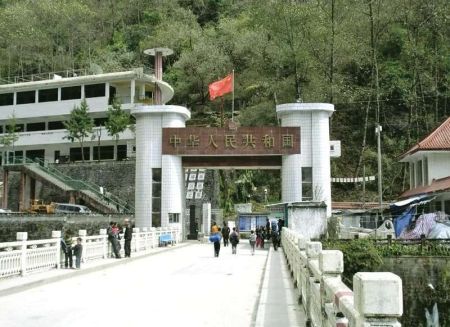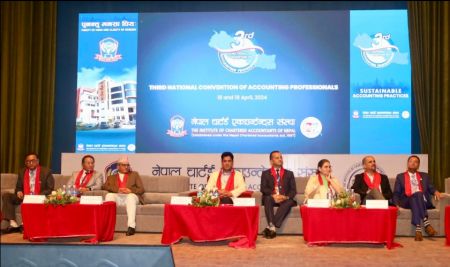.jpg)
--By Purna Man Shakya
Generally employees are career conscious but organizations rarely consider their growth as a part of their HR vision. However, career growth is important for driving performance, retaining people and ensuring employee satisfaction. Along with this employees need to be aware in finding right jobs throughout their careers. A demonstrated willingness to continue to learn and use new skills, particularly technical skills, is critical to long-term career success. Traditional movement "up" the career ladder is no longer the only way to achieve success rather employees need to be creative in identifying ways to move along in their career - such as lateral moves or even career changes that will broaden their experience or help leverage them into a different area.
What is it?
Career growth is a composite organizational process which involves employees, addresses their ambitions, assigns them roles and responsibilities corresponding to their potential, evaluates their performance and creates positions to accommodate their growth ambitions. The purpose of career growth is to enhance each employee’s current performance, enable individuals to take advantage of future job opportunities and fulfil employer's goals for a dynamic and effective workforce in order to create win-win situation between both employees and employers. Besides, career growth depends upon an individual’s knowledge, skills and rational intelligence.
Career growth operates in a cycle and for its completion a number of actions have to be taken at different levels i.e. employees, managers and organization.
A) Employees:
Human beings generally have two contradictory psychologies, one they feel comfortable living with status quo and another they always want to do better in everything as time passes. So, career growth depends upon which element has more roles to play in our career. Those who are happy with status quo do not need much career growth plan where as those who want to progress definitely need ones. At the same time, an employee must consider inherent limitations; may be of physical or mental status, interest, personality type, priority, value system, economic condition etc. before selecting any career and also making a career plan. If an extremely introvert person enters a career in sales or legal profession, only destination will be the disaster, nothing less nothing more. Generally saying career growth to an employee means climbing a ladder of an organizational hierarchy, increase in remuneration and benefits and acquire higher-level skills and competencies. Depending upon rational intelligence there can be four career growth plans;
• Horizontal where an individual believes gaining, not one not two but many fields of knowledge right from the very beginning. However, it will lead to a situation called “jack of many things master of none” in the long run.
• Vertical where an individual focuses on one area and specializes it. However, this kind of career looks more like black and white, with no colour. With this pattern, people cannot reach a stage of self-actualization.
• Horizontal to Vertical where an individual’s career growth grows horizontally for the first few years and subsequently changes to Vertical then after.
• Vertical to Horizontal where an individual’s career growth grows vertically for half or more of the career period then adds more items and portfolios in their career menu making career path horizontal. This pattern is close to the theory of Maslow’s need hierarchy. This will give rise to a situation called, ’jack of many things master of one.’
Thus employees are advised to:
• Determine what they want from their careers- now and in the future.
• Examine individually, or along with their supervisors, their interests and ambitions.
• As a part of performance management process, develop a yearly employee development plan (EDP) with supervisor’s input, including current job development and longer-term career objectives.
• Work with supervisors to identify on the job learning, training opportunities and other avenues for professional development.
B) Managers/ Supervisors
Leadership skill of a supervisor also influences employee career growth to the maximum extent. This is evident from the fact that employees normally feel comfortable and growing while working with good supervisors and feel harassing and non- productive while working with bad supervisors. After all supervisors’ efficiency should be measured by looking at how well employees are groomed. Thus, a supervisor is advised to:
• Identify the job-related knowledge, skills, competencies and experience needed for an employee to be effective in that position.
• Help subordinates to define their short and long-term development needs that support both organizational objectives and employee’s career goals and this has to be done from the first day an employee joins the organization.
• Support Employee Development Plans by indicating specific steps that need to be initiated to accomplish the learning goals so that an employee grows with effective experiences rather than dull experiences, which is counted merely on the number of years worked.
• Help the employee in understanding the type of positions that will be best suited for his/her career growth and for this purpose employees should be encouraged to provide comprehensive CVs.
• Identify right training for an employee so that the employee learns and develops in a real sense. Some organizations in Nepal are using 3+1 performance appraisal model where 3 means weight age for the performance and 1 means weight age for self-development.
C) Organization/ Management
Employee career growth also contributes in the growth of an organization. With the growth of an organization more experiences are required which can be fulfilled only with employee career growth within the organization. In absence of internal growth, organization has to spend comparatively huge sum for tapping highly experienced individuals from external recruitment. At the same time external recruitment has to be handled perfectly otherwise it will sow a seed of dissatisfaction among the existing employees. So, an effort should be made to align organizational strategy with that of HR strategy.
So, an organization is advised to:
• Provide a fair and equitable job and compensation structure that supports both organization’s as well as individual’s growth.
• Enrich job-positions to create more challenges in the work environment.
• Provide time and funds for employee development activities.
• Create processes to utilize the knowledge, skills and abilities of each employee.
• Undertake pro-active human resources planning to meet future staffing needs.
• Evaluate employees and create succession pipelines for vital job positions in the organization.
• Identify & nurture talent and reward performance in a transparent manner.
• Build a dynamic and flexible career growth matrix and make growth parameters transparent to the employees.
• Build an environment where line managers take some of the essential responsibilities of HR domain.
Shakya is a Lecturer at Grammar Public College, a Management Consultant with BS Nepal and Chairman of Sarathi Nepal, Lalitpur. The article is based on a discussion organised by Real Solutions recently.






















